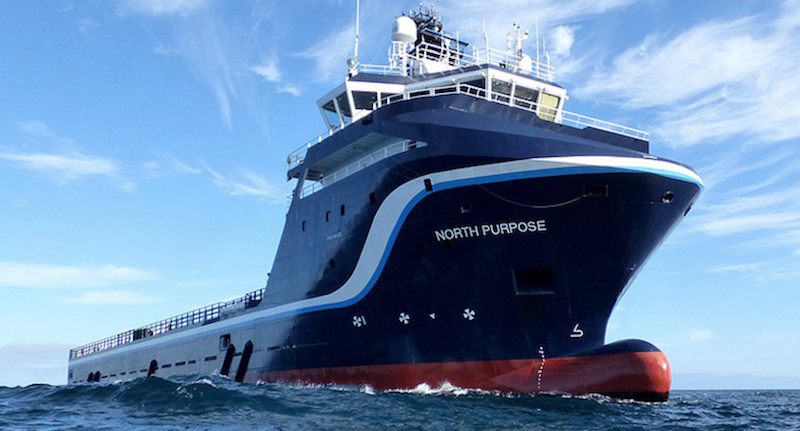Offshore service vessel operator GulfMark Offshore Inc. said Friday that the Gulf of Mexico is seeing its first signs of market tightening since the offshore downturn began, with large vessel day rates up 5% since 2017's fourth quarter.
The Houston-based company announced results for the quarter ended March 31, 2018. Among the highlights were a free cash flow positive in the first quarter of $1 million, excluding final charges from 2017 restructuring of $10.4 million and cash debt cost of $2.4 million, and a forecast that the company will be cash flow positive in the fourth quarter.
“The momentum of the turnaround of GulfMark has increased since our last call," Quintin Kneen, president and CEO, said in a statement.
Kneen said GulfMark has seen a strengthening market in its leading North Sea position, with a 13% quarterly increase in average day rates and another 20% increase or more in average day rates projected for the second quarter.
"The optimism in the North Sea is quite exciting," Kneen told analysts during the company's earnings call Friday. "And although we have a lot of room for day rates to run before I would suggest this industry has recovered, the recovery is underway. The obvious indicator that the market is in recovery is the observation of increasing day rates."
GulfMark is also starting to see signs of improvement in the Americas region as well. Sequential quarterly increases in average day rates for the larger PSVs in the Americas are up 5% over the fourth quarter of 2017. More importantly, the Baker Hughes offshore rig count for the U.S. Gulf of Mexico is up 67% since the end of the first quarter, from 12 on March 29 to 20 on May 11.
"Vessel supply is tightening and the improving vessel day rates are reminiscent of what we saw in the North Sea region in 2017," Kneen said. "Based on this pattern, 2019 should be the turnaround year for the Americas."
GulfMark emerged from Chapter 11 bankruptcy on Nov. 14, 2017, at which time it adopted fresh start accounting in accordance with accounting and reporting regulations. As a result, the company became a new entity for financial reporting purposes on Nov. 15, 2017.




